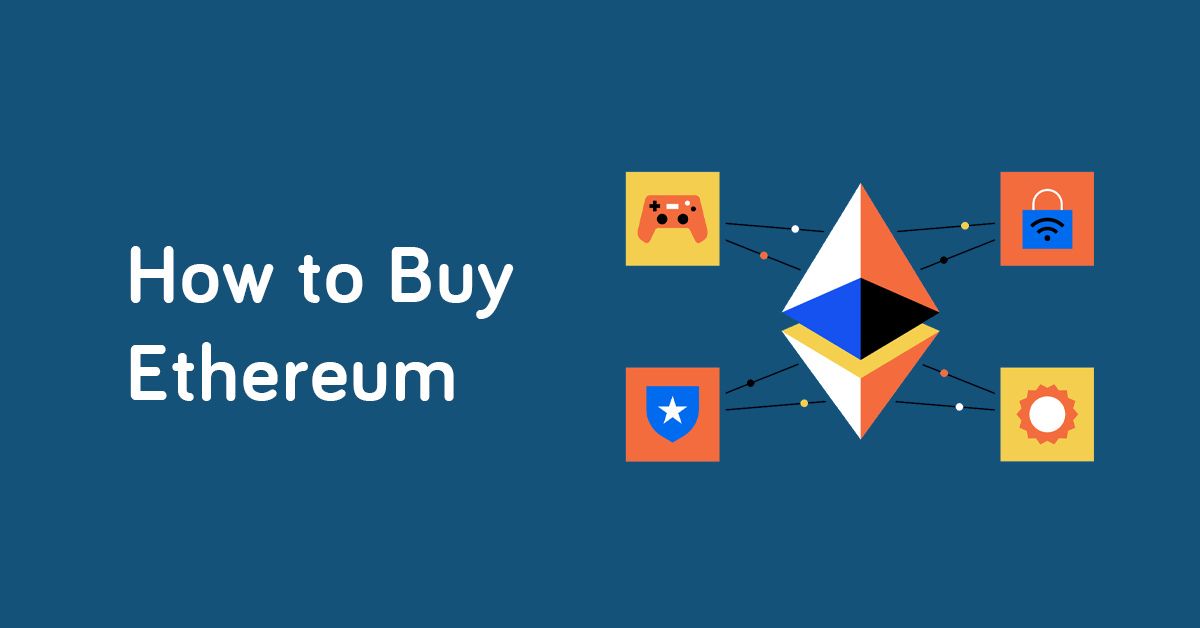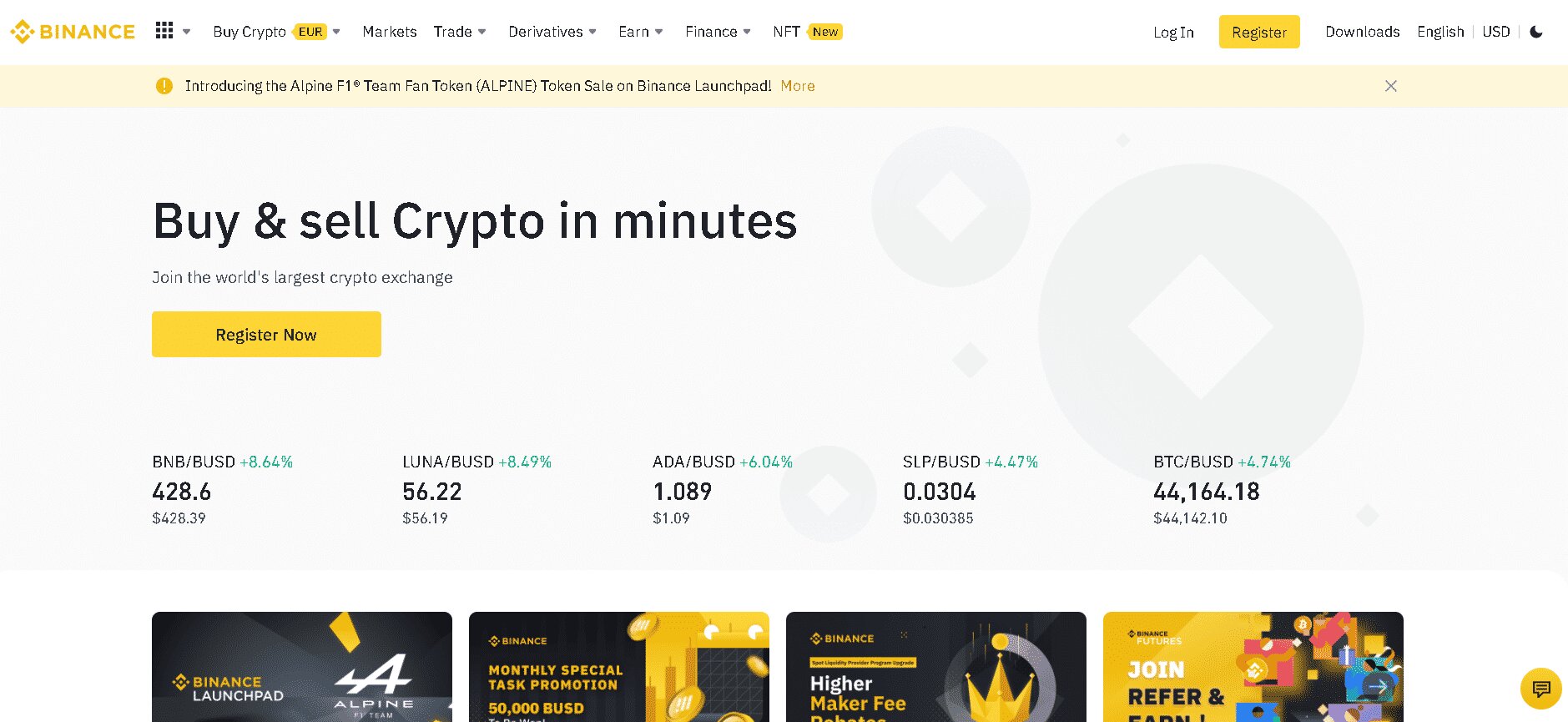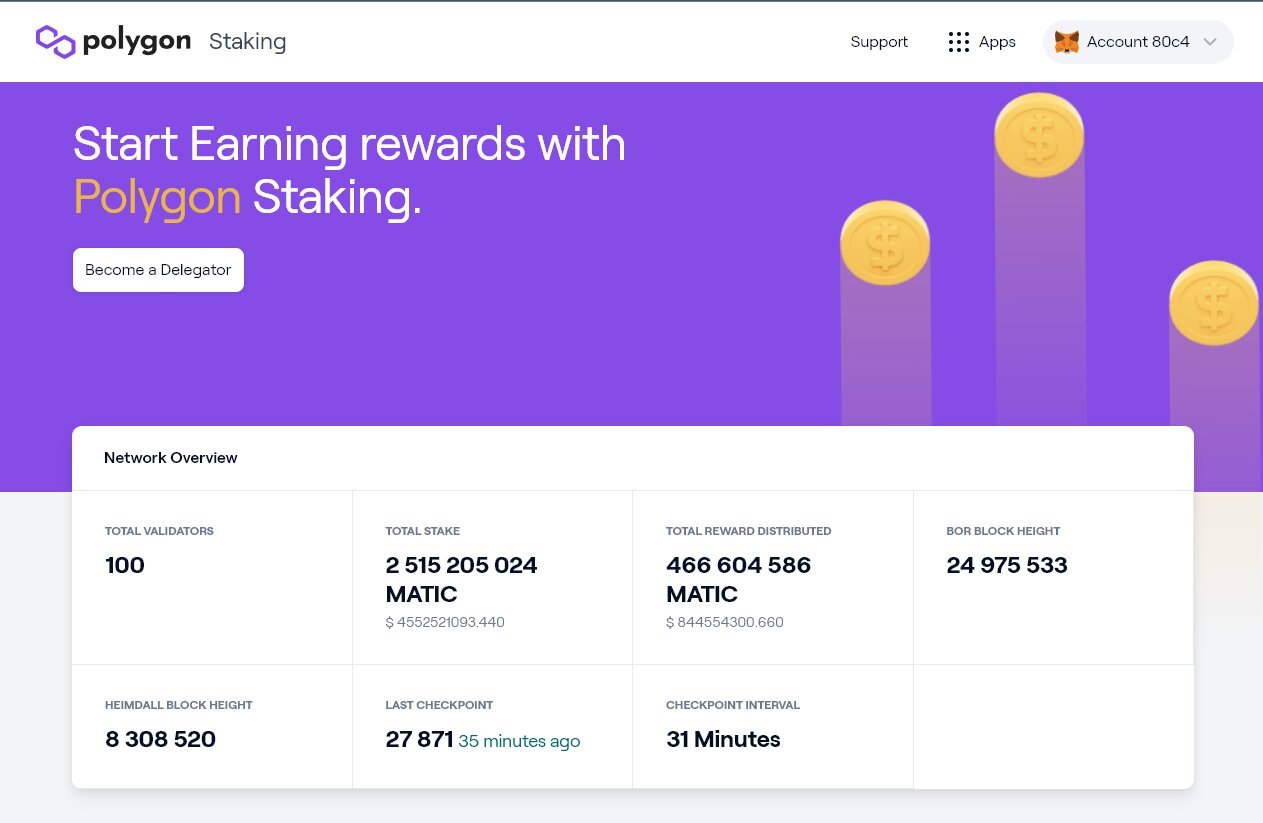Introduction
Welcome to the world of cryptocurrency! If you’re interested in investing in digital currencies and reaping potential profits, then Ethereum is a name you should familiarize yourself with. Ethereum is not only a digital currency, but also a decentralized platform that allows for the development and execution of smart contracts. In this article, we will guide you through the process of buying Ethereum and provide helpful tips to ensure a smooth and secure transaction.
Before we dive into the steps of purchasing Ethereum, let’s briefly explore what Ethereum is and why it has gained popularity in the cryptocurrency market. Ethereum was introduced in 2015 by programmer Vitalik Buterin and has since become the second-largest cryptocurrency by market capitalization, after Bitcoin. While Bitcoin focuses on being a digital currency, Ethereum is designed to be a platform for building blockchain-based applications.
One of the key features of Ethereum is its ability to execute smart contracts. These are self-executing agreements written in code that automatically facilitate, verify, or enforce the terms of the contract without the need for intermediaries. This decentralized approach to contracts has garnered attention from various industries and has the potential to revolutionize traditional business models.
Now that you have a basic understanding of what Ethereum is, let’s move on to the steps involved in purchasing this cryptocurrency. Don’t worry if you’re new to the world of cryptocurrency – we will guide you through the process from start to finish.
What is Ethereum?
Ethereum is a decentralized blockchain platform that allows for the development and execution of smart contracts. Launched in 2015 by Vitalik Buterin, the platform has gained significant popularity and attention in the cryptocurrency space.
Unlike Bitcoin, which primarily serves as a digital currency, Ethereum aims to provide a platform for applications that go beyond simple monetary transactions. It enables developers to build decentralized applications (DApps) and smart contracts on its blockchain.
Smart contracts are self-executing agreements coded in a programming language called Solidity. They automatically enforce the terms and conditions of the agreement without the need for intermediaries, such as lawyers or banks. This eliminates the risk of fraud and reduces transaction costs, making it an appealing solution for various industries.
Ethereum has its own native cryptocurrency called Ether (ETH). Ether is used as a fuel to power the network and execute smart contracts. It is also traded on various cryptocurrency exchanges and serves as a speculative investment vehicle.
One of the distinguishing features of Ethereum is its ability to support decentralized applications. These applications run on the Ethereum Virtual Machine (EVM), a runtime environment that ensures the execution of smart contracts with high security and reliability. Developers can create DApps that offer a wide range of functionalities, from decentralized finance (DeFi) applications to decentralized exchanges, gaming platforms, and more.
Ethereum’s open-source nature allows developers worldwide to contribute to the platform’s growth and improvement. This has led to a vibrant ecosystem of projects and innovations being built on top of Ethereum, making it one of the most influential blockchain platforms in the industry.
In summary, Ethereum is not just a cryptocurrency but a powerful blockchain platform that enables the creation of decentralized applications and smart contracts. Its innovative features and growing ecosystem make it an exciting choice for developers and investors alike.
Setting Up a Wallet
Before you can buy Ethereum, you’ll need to set up a digital wallet to store your cryptocurrency securely. A wallet is essentially a digital bank account that allows you to send, receive, and store your Ethereum.
There are several types of wallets available, each with its own advantages and security features. Here are a few options to consider:
- Software Wallets: These are applications that you can install on your computer or smartphone. They provide convenient access to your Ethereum and are available for different operating systems. Popular software wallets include MetaMask, MyEtherWallet, and Trust Wallet.
- Hardware Wallets: If you’re looking for the highest level of security, hardware wallets are a great choice. These are physical devices that store your Ethereum offline and require you to confirm transactions by physically pressing buttons on the device. Ledger and Trezor are two popular hardware wallet brands.
- Online Wallets: These are web-based wallets that you can access through your internet browser. While they offer convenience, online wallets are considered less secure than software or hardware wallets since they rely on third-party servers. Examples of online wallets include Coinbase Wallet and Binance Wallet.
Once you’ve chosen a wallet that suits your needs, follow the provider’s instructions to set it up. This typically involves creating a strong password, backing up your wallet’s recovery phrase or private keys, and implementing additional security measures like two-factor authentication.
Remember to keep your wallet information confidential and never share your private keys or recovery phrase with anyone. Losing access to your wallet can result in permanent loss of your Ethereum, so it’s crucial to keep backups in a safe and secure location.
Now that you have a wallet set up, you’re ready to move on to the next step: choosing an exchange to buy Ethereum.
Choosing an Exchange
In order to buy Ethereum, you’ll need to find a reputable cryptocurrency exchange where you can make the purchase. There are numerous exchanges to choose from, each with its own features, fees, and security measures. Here are a few factors to consider when choosing an exchange:
- Reputation and Security: Look for exchanges that have a solid reputation and a track record of securely handling customers’ funds. Research online reviews and consider the exchange’s history in terms of security breaches and regulatory compliance.
- Liquidity: Liquidity refers to the ability to buy or sell assets quickly without causing significant price fluctuations. Choose an exchange that has sufficient trading volume to ensure a smooth buying experience.
- User Interface: Consider the user-friendliness of the exchange’s platform. A well-designed and intuitive interface can make the buying process more straightforward, especially for beginners.
- Supported Countries: Not all exchanges operate in every country. Make sure that the exchange you choose is available in your country and allows you to deposit funds using your preferred payment methods.
- Payment Methods: Check which payment methods the exchange supports. Some exchanges offer a variety of options, including bank transfers, credit/debit cards, and even payment through other cryptocurrencies.
- Transaction fees: Different exchanges charge varying fees for buying Ethereum. Take into account the transaction fees and ensure that they align with your budget and trading volume.
Some popular and reputable exchanges where you can buy Ethereum include Coinbase, Binance, Kraken, and Gemini. However, it’s always a good idea to conduct your own research and evaluate the options based on your specific needs and preferences.
Once you’ve chosen an exchange, you’ll need to sign up for an account and complete any required verification processes. This typically involves providing personal identification documents, such as a passport or driver’s license, to comply with anti-money laundering (AML) and know your customer (KYC) regulations.
It’s important to note that different exchanges have different verification procedures and may take varying amounts of time to complete the verification process. Be prepared to provide the necessary documentation and exercise patience during this step.
Once your account is verified and you have deposited funds into your exchange account, you’re ready to proceed with purchasing Ethereum.
Verification Process
Before you can buy Ethereum on most reputable exchanges, you’ll need to go through a verification process. This process is crucial for ensuring the security of the platform and complying with regulatory requirements, such as anti-money laundering (AML) and know your customer (KYC) regulations.
Here’s a general overview of the typical verification process:
- Account Creation: Start by signing up for an account on the exchange of your choice. Provide your email address and create a strong password to protect your account.
- Personal Information: Complete your profile by providing your personal information, such as your full name, date of birth, and sometimes your address. Ensure that the information you provide matches your identification documents.
- Identity Verification: Most exchanges require you to verify your identity by submitting a scanned copy or photo of a government-issued identification document, such as a passport or driver’s license. Follow the instructions provided by the exchange to upload the necessary documents securely.
- Proof of Address: In some cases, exchanges may request proof of your residential address. This can be done by providing a recent utility bill, bank statement, or other official documents that clearly show your name and address.
- Selfie Verification: To prevent identity theft and ensure that the person applying for the account matches the submitted identification documents, some exchanges may require you to provide a selfie or a photo of yourself holding your identification document.
- Wait for Verification: After submitting your documents, the exchange will review and verify your information. This step may take some time, depending on the exchange’s processing time and the volume of verification requests they receive.
- Additional Steps: Depending on the exchange’s policies, they may require additional steps, such as answering verification questions or undergoing video call verification.
It’s crucial to provide accurate and valid information during the verification process. Inaccurate information or attempted fraud can result in account suspension or closure.
While the verification process can occasionally be time-consuming, it plays a critical role in maintaining the security and integrity of the exchange. Additionally, complying with regulatory requirements helps protect users and prevent illicit activities.
Once your account is successfully verified, you’re one step closer to buying Ethereum!
Purchasing Ethereum
Now that you’ve set up your wallet and completed the verification process, you’re ready to buy Ethereum. The process of purchasing Ethereum on an exchange typically involves the following steps:
- Deposit Funds: Start by depositing funds into your exchange account. Most exchanges support various deposit methods, such as bank transfers, credit/debit cards, or even the option to deposit other cryptocurrencies like Bitcoin. Choose the method that is most convenient for you and follow the instructions provided by the exchange to complete the deposit.
- Select Ethereum: Once your account is funded, navigate to the exchange’s trading platform. Look for the pair that represents Ethereum, usually denoted as ETH/USD or ETH/BTC. If you deposited a different cryptocurrency, you may need to trade it for Ethereum first.
- Place an Order: Next, decide on the type of order you want to place. There are two common order types: market orders and limit orders. A market order allows you to buy Ethereum at the current market price, while a limit order allows you to set a specific price at which you’re willing to buy Ethereum.
- Review and Confirm: Before finalizing your order, review the details including the amount of Ethereum you’re buying, the price, and any associated fees. Double-check that everything is correct, then confirm the purchase.
- Monitor Your Purchase: After placing your order, your Ethereum purchase will be processed. You can monitor the progress on the exchange’s platform. Once the transaction is completed, the Ethereum will be credited to your exchange account.
- Withdraw Your Ethereum: It’s recommended to transfer the Ethereum from the exchange to your personal wallet for added security. Locate the withdrawal option on the exchange’s platform and enter your wallet address. Follow the instructions to initiate the withdrawal, and soon your Ethereum will be safely stored in your wallet.
Keep in mind that the steps and the user interface may vary slightly between different exchanges. It’s important to carefully read and follow the instructions provided by the exchange you’re using to ensure a smooth purchasing experience.
Remember that the cryptocurrency market can be volatile, and prices can fluctuate rapidly. Consider setting price alerts or regularly monitoring the market if you are planning to time your purchase for the best possible price.
Once you’ve successfully purchased Ethereum and transferred it to your wallet, you’re now a proud owner of this innovative digital asset.
Storing Your Ethereum
After purchasing Ethereum, it’s essential to store it securely to protect your investment. Storing Ethereum involves using a digital wallet, either a software wallet, a hardware wallet, or an online wallet.
Here are the key steps to store your Ethereum:
- Choose a Wallet: Decide on the type of wallet that best suits your needs. Software wallets, like MetaMask or MyEtherWallet, are convenient to use and accessible through your computer or smartphone. Hardware wallets, such as Ledger or Trezor, offer enhanced security by storing your Ethereum offline. Online wallets, such as Coinbase Wallet or Binance Wallet, provide web-based access but are considered less secure.
- Create a Wallet: Follow the instructions provided by the wallet provider to create a new wallet. This typically involves choosing a strong password and generating a recovery phrase or private key. Keep this information private and secure, as it’s crucial for accessing your wallet and recovering it if needed.
- Back Up Your Wallet: It’s vital to make regular backups of your wallet. Store the recovery phrase or private key in a safe and secure location, such as a password-protected digital file or an offline storage device. Consider keeping physical copies in multiple secure locations to prevent loss in case of fire, theft, or other unforeseen events.
- Transfer Ethereum to Wallet: Depending on the wallet you’re using, find the option to receive or deposit Ethereum. Obtain your wallet address and use it to transfer your Ethereum from the exchange to your wallet. Double-check the accuracy of the wallet address to avoid any mistakes.
- Additional Security Measures: Consider enabling additional security features offered by your wallet, such as two-factor authentication (2FA) or biometric authentication, to add an extra layer of protection.
Remember that your wallet essentially acts as your digital bank account. Protecting your wallet and its access details is crucial to safeguard your Ethereum. Avoid sharing your private key or recovery phrase with anyone, as this could lead to unauthorized access and potential loss of funds.
It’s worth noting that software and online wallets are more convenient for regular transactions and accessibility, while hardware wallets provide the highest level of security for long-term storage of larger amounts of Ethereum.
Regularly update your wallet software and pay attention to any security warnings or updates from the wallet provider. Stay informed about potential security threats and best practices to ensure the safety of your Ethereum holdings.
By following these steps and keeping your Ethereum stored securely, you can have peace of mind knowing that your digital assets are protected.
Security Tips
When it comes to dealing with cryptocurrencies like Ethereum, security should be a top priority. Here are some essential security tips to protect your Ethereum and ensure a safe and worry-free experience:
- Use Strong Passwords: Create a unique, strong password for your wallet and exchange accounts. Include a combination of uppercase and lowercase letters, numbers, and special characters. Avoid using easily guessable information like your name or birthdate.
- Enable Two-Factor Authentication (2FA): Activate 2FA on your wallet and exchange accounts wherever possible. This adds an extra layer of security by requiring a second form of verification, such as a code sent to your mobile device, in addition to your password.
- Keep Software Updated: Regularly update your wallet software, exchange apps, and any other cryptocurrency-related software you use. Updates often include security patches and bug fixes that help protect against vulnerabilities.
- Beware of Phishing Attacks: Be cautious of phishing attempts where scammers try to trick you into revealing your wallet or exchange login credentials. Always double-check the website’s URL, use bookmarks or trusted sources to navigate to your wallet or exchange, and never click on suspicious links or provide your information to unsolicited sources.
- Secure Your Devices: Keep your computer, smartphone, and other devices used for Ethereum transactions secure. Use reputable antivirus and anti-malware software, keep your operating system updated, and avoid downloading files or apps from untrusted sources.
- Back Up Your Wallet: Regularly back up your wallet’s recovery phrase or private keys. Store backups securely in multiple locations, such as offline devices or a password-protected digital file. This ensures that you can recover your wallet if you lose access to your primary device.
- Be Cautious with Public Wi-Fi: Avoid conducting Ethereum transactions or accessing your wallet or exchange accounts using public Wi-Fi networks. Public networks can be vulnerable to eavesdropping and other security risks. If you must use public Wi-Fi, consider using a virtual private network (VPN) for added security.
- Verify URLs and SSL Certificates: Before entering sensitive information on a website, ensure that the URL starts with “https” and that there’s a padlock icon in the address bar. This indicates a secure connection and helps protect your data from being intercepted.
- Be Mindful of Social Engineering: Be cautious of unsolicited messages or calls requesting your wallet or exchange account information. Legitimate organizations will never ask for your sensitive information, so be wary of any requests for login credentials or private keys.
- Stay Informed: Keep yourself informed about the latest security practices, news, and developments in the cryptocurrency space. Following reputable sources and participating in cryptocurrency forums can help you stay up-to-date on potential threats and best security practices.
By following these security tips, you can significantly reduce the risk of falling victim to scams, theft, and unauthorized access to your Ethereum. It’s essential to be proactive and diligent in maintaining the security of your digital assets.
Conclusion
Congratulations! You’ve now learned the essential steps to buy and store Ethereum securely. This guide has provided you with a comprehensive overview of the process, from setting up a wallet to choosing an exchange, completing the verification process, purchasing Ethereum, and implementing security measures.
Ethereum presents exciting opportunities in the world of cryptocurrencies, with its innovative platform for smart contracts and decentralized applications. As you navigate the cryptocurrency market, it’s important to stay informed, exercise caution, and prioritize security to protect your investments.
Remember to choose a reputable wallet and exchange, use strong passwords and two-factor authentication, and keep your software updated. Be wary of phishing attempts and suspicious links, and always verify the URLs and SSL certificates of websites you visit.
Additionally, securely storing your Ethereum in a wallet, ideally a hardware wallet, ensures that you have full control over your assets. Regularly backing up your wallet and keeping your private keys secure are essential practices for protecting against loss or theft.
As the cryptocurrency landscape continues to evolve, it’s crucial to stay vigilant and adapt to emerging security practices. Keep yourself informed about the latest trends, news, and best practices in the cryptocurrency community.
With the knowledge gained from this guide, you are now equipped to confidently navigate the process of buying and storing Ethereum. Embrace the opportunities presented by this revolutionary technology, and remember to always prioritize security in your cryptocurrency journey.

























